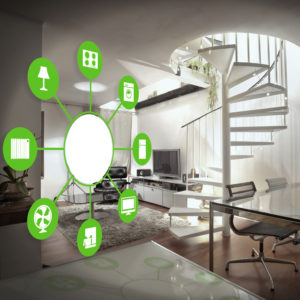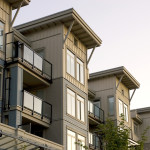 Many facility manager customers are now faced with the problem of how to handle aging Building Management Systems (BMS). As their contractor, you’ve ensured that all HVAC components will last for years – especially ones exposed to the elements like roof vents and wall caps. But a control system could be obsolete or fail within a few years. Anything older than a decade is considered “aging.”
Many facility manager customers are now faced with the problem of how to handle aging Building Management Systems (BMS). As their contractor, you’ve ensured that all HVAC components will last for years – especially ones exposed to the elements like roof vents and wall caps. But a control system could be obsolete or fail within a few years. Anything older than a decade is considered “aging.”
Issues with a BMS can include tenant expectations or, sometimes, simply a decline in performance. Either way, your customer has a problem on their hands, and as their HVAC consultant, you need to weigh in with a solution.
The first thing to consider is whether there truly is a problem. Performance declines, for example, can be the result of tenants interfering with the system. So, the first course of action is to inspect the building and check against the system specs.
Where there are no serious performance issues, tenants may expect more local control and integration. The facility manager must determine whether tenant satisfaction warrants action.
One of the biggest issues with aging BMS is that they are proprietary. Proprietary ones use a communications protocol that is specific to a certain manufacturer or group of manufacturers. This limits any improvements, because any expansions or changes to the system must use the same proprietary language. The problem is further exacerbated if the original equipment manufacturer (OEM) has gone out of business.
If the aging BMS needs to be addressed, there are two options. Either add another layer to the control system that addresses the concerns, creating a hybrid system, or replace the entire system. This requires the customer to weigh the short-term and long-term costs and benefits.
A hybrid solution may cost less at the outset, but may not provide enough benefits to warrant the expense. While a complete replacement will add long-term value to a building, it may simply not be in the budget.
Hybrid system with a gateway
Gateway technology, also known as a head-end platform, essentially connects to the BMS and any additional IoT systems to provide the end-user with a graphical interface they can use to monitor and control the system.
The upfront cost for this option will be less than the cost of replacing the entire BMS, but your customers should be made aware of the hidden cost and the drawbacks associated with this choice.
One major drawback is that no matter how new and slick the gateway technology is, the system will only work as quickly as its slowest part. That means after a significant investment, your customer may experience little improvement in system response.
Watch for hidden costs
While many gateways claim to integrate easily, the set up and installation may be very costly. Be certain that the gateway provider and BMS programming languages will be compatible and that the company handling the integration has worked with all relevant languages before.
As well as the higher integration costs, incompatible languages may also lead to a more complicated user interface, which means building staff has more work to do.
Encourage your customer to contact other building managers who have integrated similar systems so they know what to expect. After this research, your customer may find they don’t want to spend money on a solution that will only marginally improve operations.
Out with the old BMS
Replacement of the BMS will cost your customers more money upfront, but they may see sufficient savings over time to justify the expense. They should get a system that works more efficiently than they would with a gateway solution, but they’ll have to do some cost analysis before making that decision.
If your customer opts for replacement, their next decision is how to implement the change. Large buildings with multiple air handlers will need to be upgraded in phases. With a new BMS, you will need to setup the first phase as a distinct unit with its own user interface. This means building staff will be operating two interfaces until the project is complete, the new system and the legacy system.
Regardless of where the BMS is in its lifecycle, your customer should be planning for replacement or the addition of a gateway within a decade.



